- Home
- L. Frank Baum
Wonderful Wizard of Oz (Barnes & Noble Classics Series) Page 4
Wonderful Wizard of Oz (Barnes & Noble Classics Series) Read online
Page 4
Notes
1 Michael Patrick Hearn reports that Dorothy “may have been no more than five or six years old when [she] took her first trip to Oz,” which he calculates based on material in the sequels, on Denslow’s drawings, and on a remark made by one of Baum’s sons that Baum “wrote the book for children two to six years old.” See Hearn, The Annotated Wonderful Wizard of Oz, 2000, p. 35, note 4. See “For Further Reading.”
2 Baum, quoted in Hearn, p. 12, note 1.
3 Donald Rackin, “Blessed Rage,” in Lewis Carroll, Alice in Wonderland , edited by Donald J. Gray, A Norton Critical Edition, second edition, New York: W. W. Norton, 1971, p. 401.
4 Mark Evan Swartz, author of Oz Before the Rainbow, chronicles the evolution of adaptations of The Wizard of Oz and demonstrates the inaccuracy of blaming MGM and Victor Fleming for all these changes. As early as the 1910 one-reel silent version of the novel, which itself inherited elements from the 1902 stage version, film-makers, some of them with Baum’s blessing, had begun blurring the line between Kansas and Oz. One way to look at the 1939 film adaptation is that it was a vast improvement on changes already introduced in earlier adaptations and raised several stop-gaps and audience concessions to the level of high art.
5 The snowstorm was introduced in the 1902 musical and may have been Baum’s own suggestion. See Hearn, p. 156, note 5.
6 Hearn reports that elementary schools occasionally put Dorothy on trial for murder. See Hearn, p. 226, note 18.
7 The idea to shifting from sepia to Technicolor when Dorothy steps out of the house was, as it turns out, a duplication of an effect produced in an earlier, shorter 1933 cartoon version that received limited distribution. See Hearn, p. 33, note 2.
8 Hearn, p. 27, note 13.
9 The idea of a play that tacitly embodies its interpretation did not begin or end with The Wizard of Oz. The staging of Peter Pan routinely casts the same actor to play both Mr. Darling and Captain Hook, and legend has it that in Sophocles’ Philoctetes the same actor played the role of both the evil Odysseus and the god Hera cles, who arrives as a deus ex machina.
10 Though there have been dissertations written on The Wonderful Wizard of Oz, it has tended to attract a good deal less scholarly interest because on the surface it offers scholarship too little opportunity to do what it does best—quibble.
11 Jacqueline Rose, The Case of Peter Pan, or, the Impossibility of Children’s Fiction, London: Macmillan, 1984. Both Dodgson and Barrie are the subject of biopics. In the case of Barrie, the most recent is Finding Neverland (2004).
12 The reception history of The Wonderful Wizard of Oz includes an outburst of hostility around the centennial of Baum’s birth in 1956, when teachers who found the book badly written and useless in the classroom organized a protest against it. Martin Gardner and Russel B. Nye’s book, The Wizard of Oz & Who He Was, was an attempt to redress the charges that the book was pedagogically unsound and refute the attacks on Baum’s admittedly thin style.
13 The term was coined by D. C. Muecke. See Irony, edited by J. D. Jump. London: Metheun, 1970.
14 Sheldon Cashdan, The Witch Must Die: How Fairy Tales Shape Our Lives, New York: Basic Books, 1999, p. 218.
15 George Lucas has openly admitted the influence of the characters in The Wizard of Oz on his own foursome of Luke, Princess Leia, Han Solo, and Chewbaca.
16 See Joseph Campbell, The Hero with a Thousand Faces, Princeton, NJ: Princeton University Press, 1968, p. 114. See also Northrop Frye, The Anatomy of Criticism: Four Essays, Princeton, NJ: Princeton University Press, 2000, and Perry Nodelman, The Pleasures of Children’s Literature, New York: Longman, 1992, for discussions and applications of the archetypal approach. For Jung’s presentation of archetype, see Symbols of Transformation, second edition, translated by R. F. C. Hull, Princeton, NJ: Princeton University Press, 1967. Hearn notes that Campbell never mentions The Wizard of Oz and then proceeds to demonstrate how consistent it is with Campbell’s heuristic. See Hearn, p. 59, note 5.
17 Other examples are Moses (moishe, “to pull out,” an allusion to his being placed in a basket of reeds) and Oedipus (“swollen foot”). Dorothy’s last name is revealed in the third novel in the series, Ozma of Oz (1907) but actually makes its first appearance in the 1902 musical as a punning reference to how she got to Oz and may have been supplied by the director. See Hearn, p. 48, note 30.
18 Alison Lurie, “The Oddness of Oz,” The New York Review of Books, December 21, 2000, pp. 16-24.
19 This may seem absurdly unimportant to adults but is of some interest to attentive children. Hearn reports that in a later Oz book it is revealed that Toto could talk all along, but he chose not to.
20 In the MGM version of 1939, the leader of the Winged Monkeys is played by actor Pat Walshe and has a name (Nikko), several lines, and billing.
21 Baum’s witches, as I discuss later, are among his greatest inventions. They are related to traditional witches only insofar as they use magic. Their power is not “demonic” in origin—at least not technically.
22 According to Hearn, “the change from one region to another follows the principles of color theory.” Hearn, p. 61, note 7.
23 Hans Biedermann, Dictionary of Symbolism, translated by James Hulbert, New York: Meridian, 1994), p. 158. According to G. Heinz Mohr (whose Lexikon der Symbole, Düsseldorf und Köln: Diederichs, 1981, is referenced in Biedermann), “Christian symbolism finds green ‘equidistant from the blue of heaven, the red of hell . . . an intermediate and mediating color, soothing, refreshing, human, a color of contemplation, of the expectation of resurrection” (Biedermann, p. 158). Color analysis based on traditional value assignments, moreover, would have to explain why it is that Glinda’s holdings, the Land of the Quadlings, is marked in red on the map of Oz that Baum created and that the Wicked Witch controlled the Winkie Country, which is colored yellow.
24 The name came as either an afterthought or an accident. “One evening while telling his children and their friends a story about a little girl named Dorothy who was carried off by a cyclone to a fairyland, Baum was asked what was the name of the strange country. Looking about the room, his eye fell upon the drawers of the filing cabinet, which were labeled ‘A-N’ and ‘O-Z’; he told the children it was the Land of Oz.” See Hearn, p. 43, note 17, for this and other ingenious explanations.
25 The old woman named Mother Holle in the Grimm’s fairy tale of the same name, for instance, is a figuration of Mother Nature and is clearly super- or inhuman, unlike, by way of contrast, the witch who attempts to eat Hansel and Gretel. Mother Holle is, in fact, a type not of the Good Witch but of embodiments of providence or natural order, which is inevitably, and aggressively, good in children’s literature.
26 Baum’s The Master Key: An Electrical Fairy Tale (1901) a boy named Rob discovers the power of electricity when he summons accidentally the Demon of Electricity. The demon, not incidentally, is another of Baum’s crossbred characterizations who informs Rob that “demons may be either good or bad, like any other class of beings. Originally all demons were good, yet of late years people have come to consider all demons evil.” The demon then cites a passage from Hesiod, which is interesting in that the root of demon is the ancient Greek word daimon which means “spirit” or “deity.”
Introduction
Folklore, legends, myths and fairy tales have followed childhood through the ages, for every healthy youngster has a wholesome and instinctive love for stories fantastic, marvelous and manifestly unreal. The winged fairies of Grimm and Andersen have brought more happiness to childish hearts than all other human creations.
Yet the old-time fairy tale, having served for generations, may now be classed as “historical” in the children’s library; for the time has come for a series of newer “wonder tales” in which the stereotyped genie, dwarf and fairy are eliminated, together with all the horrible and blood-curdling incidents devised by their authors to point a fearsome moral to each tale. Modern education includes morality; therefore
the modern child seeks only entertainment in its wonder-tales and gladly dispenses with all disagreeable incidents.
Having this thought in mind, the story of “The Wonderful Wizard of Oz” was written solely to please children of today. It aspires to being a modernized fairy tale, in which the wonderment and joy are retained and the heartaches and nightmares are left out.
L. FRANK BAUM
Chicago, April, 1900
Chapter I.
The Cyclone,
Dorothy lived in the midst of the great Kansas rairies, with Uncle Henry, who as a farmer, and Aunt Em, who was the farmer’s wife. Their house was small, for the lumber to build it had to be carried by wagon many miles. There were four walls, a floor and a roof, which made one room; and this room contained a rusty looking cooking stove, a cupboard for the dishes, a table, three or four chairs, and the beds. Uncle Henry and Aunt Em had a big bed in one corner, and Dorothy a little bed in another corner. There was no garret at all, and no cellar—except a small hole, dug in the ground, called a cyclone cellar, where the family could go in case one of those great whirlwinds arose, mighty enough to crush any building in its path. It was reached by a trap-door in the middle of the floor, from which a ladder led down into the small, dark hole.
When Dorothy stood in the doorway and looked around, she could see nothing but the great gray prairie on every side. Not a tree nor a house broke the broad sweep of flat country that reached the edge of the sky in all directions. The sun had baked the plowed land into a gray mass, with little cracks running through it. Even the grass was not green, for the sun had burned the tops of the long blades until they were the same gray color to be seen everywhere. Once the house had been painted, but the sun blistered the paint and the rains washed it away, and now the house was as dull and gray as everything else.1
When Aunt Em came there to live she was a young, pretty wife. The sun and wind had changed her, too. They had taken the sparkle from her eyes and left them a sober gray; they had taken the red from her cheeks and lips, and they were gray also. She was thin and gaunt, and never smiled, now. When Dorothy, who was an orphan, first came to her, Aunt Em had been so startled by the child’s laughter that she would scream and press her hand upon her heart whenever Dorothy’s merry voice reached her ears; and she still looked at the little girl with wonder that she could find anything to laugh at.
Uncle Henry never laughed. He worked hard from morning till night and did not know what joy was. He was gray also, from his long beard to his rough boots, and he looked stern and solemn, and rarely spoke.
It was Toto that made Dorothy laugh, and saved her from growing as gray as her other surroundings. Toto was not gray; he was a little black dog, with long, silky hair and small black eyes that twinkled merrily on either side of his funny, wee nose. Toto played all day long, and Dorothy played with him, and loved him dearly.
To-day, however, they were not playing. Uncle Henry sat upon the door-step and looked anxiously at the sky, which was even grayer than usual. Dorothy stood in the door with Toto in her arms, and looked at the sky too. Aunt Em was washing the dishes.
From the far north they heard a low wail of the wind, and Uncle Henry and Dorothy could see where the long grass bowed in waves before the coming storm. There now came a sharp whistling in the air from the south, and as they turned their eyes that way they saw ripples in the grass coming from that direction also.
Suddenly Uncle Henry stood up.
“There’s a cyclone2 coming, Em,” he called to his wife; “I’ll go look after the stock.” Then he ran toward the sheds where the cows and horses were kept.
Aunt Em dropped her work and came to the door. One glance told her of the danger close at hand.
“Quick, Dorothy!” she screamed; “run for the cellar!”
Toto jumped out of Dorothy’s arms and hid under the bed, and the girl started to get him. Aunt Em, badly frightened, threw open the trap-door in the floor and climbed down the ladder into the small, dark hole. Dorothy caught Toto at last, and started to follow her aunt. When she was half way across the room there came a great shriek from the wind, and the house shook so hard that she lost her footing and sat down suddenly upon the floor.
A strange thing then happened.
The house whirled around two or three times and rose slowly through the air. Dorothy felt as if she were going up in a balloon.
The north and south winds met where the house stood, and made it the exact center of the cyclone. In the middle of a cyclone the air is generally still, but the great pressure of the wind on every side of the house raised it up higher and higher, until it was at the very top of the cyclone; and there it remained and was carried miles and miles away as easily as you could carry a feather.
It was very dark, and the wind howled horribly around her, but Dorothy found she was riding quite easily. After the first few whirls around, and one other time when the house tipped badly, she felt as if she were being rocked gently, like a baby in a cradle.
Toto did not like it. He ran about the room, now here, now there, barking loudly; but Dorothy sat quite still on the floor and waited to see what would happen.
Once Toto got too near the open trap-door, and fell in; and at first the little girl thought she had lost him. But soon she saw one of his ears sticking up through the hole, for the strong pressure of the air was keeping him up so that he could not fall. She crept to the hole, caught Toto by the ear, and dragged him into the room again; afterward closing the trap-door so that no more accidents could happen.
Hour after hour passed away, and slowly Dorothy got over her fright; but she felt quite lonely, and the wind shrieked so loudly all about her that she nearly became deaf. At first she had wondered if she would be dashed to pieces when the house fell again; but as the hours passed and nothing terrible happened, she stopped worrying and resolved to wait calmly and see what the future would bring. At last she crawled over the swaying floor to her bed, and lay down upon it; and Toto followed and lay down beside her.
She caught Toto by the ear.
In spite of the swaying of the house and the wailing of the wind, Dorothy soon closed her eyes and fell fast asleep.
Chapter II.
The Council with The Munchkins.
She was awakened by a shock,
The little girl gave a cry of amazement and looked about her, her eyes growing bigger and bigger at the wonderful sights she saw.
The cyclone had set the house down, very gently—for a cyclone—in the midst of a country of marvelous beauty. There were lovely patches of green sward all about, with stately trees bearing rich and luscious fruits. Banks of gorgeous flowers were on every hand, and birds with rare and brilliant plumage sang and fluttered in the trees and bushes. A little way off was a small brook, rushing and sparkling along between green banks, and murmuring in a voice very grateful to a little girl who had lived so long on the dry, gray prairies.3
While she stood looking eagerly at the strange and beautiful sights, she noticed coming toward her a group of the queerest people she had ever seen. They were not as big as the grown folk she had always been used to; but neither were they very small. In fact, they seemed about as tall as Dorothy, who was a well-grown child for her age, although they were, so far as looks go, many years older.
Three were men and one a woman, and all were oddly dressed. They wore round hats that rose to a small point a foot above their heads, with little bells around the brims that tinkled sweetly as they moved. The hats of the men were blue; the little woman’s hat was white,4 and she wore a white gown that hung in plaits from
her shoulders; over it were sprinkled little stars that glistened in the sun like diamonds. The men were dressed in blue, of the same shade as their hats, and wore well polished boots with a deep roll of blue at the tops. The men, Dorothy thought, were about as old as Uncle Henry, for two of them had beards. But the little woman was doubtless much older: her face was covered with wrinkles, her hair was nearly white, and she walked rather stiffly.
When these people drew near the house where Dorothy was standing in the doorway, they paused and whispered among themselves, as if afraid to come farther. But the little old woman walked up to Dorothy, made a low bow and said, in a sweet voice,
“You are welcome, most noble Sorceress, to the land of the Munchkins. We are so grateful to you for having killed the wicked Witch of the East, and for setting our people free from bondage.”
Dorothy listened to this speech with wonder. What could the little woman possibly mean by calling her a sorceress, and saying she had killed the wicked Witch of the East? Dorothy was an innocent, harmless little girl, who had been carried by a cyclone many miles from home; and she had never killed anything in all her life.

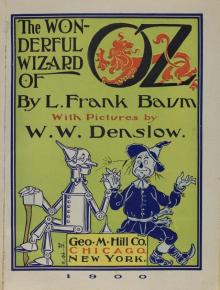 The Wonderful Wizard of Oz
The Wonderful Wizard of Oz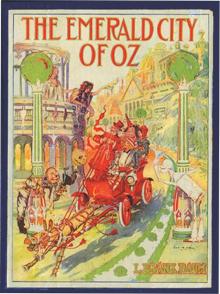 The Emerald City of Oz
The Emerald City of Oz The Story of Peter Pan, Retold from the fairy play by Sir James Barrie
The Story of Peter Pan, Retold from the fairy play by Sir James Barrie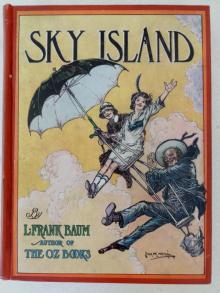 Sky Island
Sky Island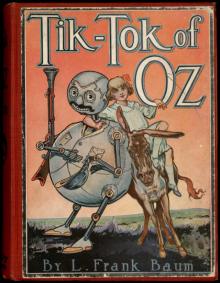 Tik-Tok of Oz
Tik-Tok of Oz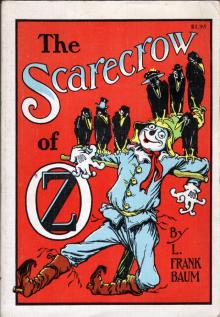 The Scarecrow of Oz
The Scarecrow of Oz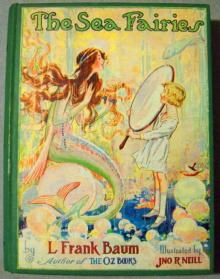 The Sea Fairies
The Sea Fairies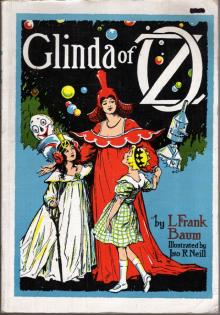 Glinda of Oz
Glinda of Oz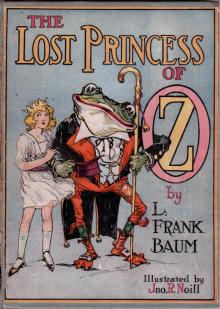 The Lost Princess of Oz
The Lost Princess of Oz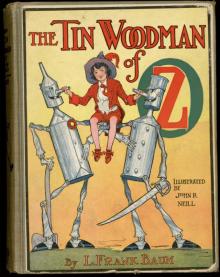 The Tin Woodman of Oz
The Tin Woodman of Oz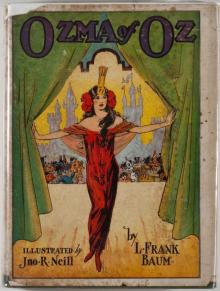 Ozma of Oz
Ozma of Oz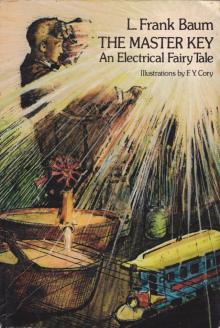 The Master Key
The Master Key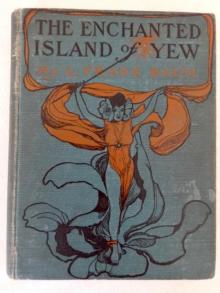 The Enchanted Island of Yew
The Enchanted Island of Yew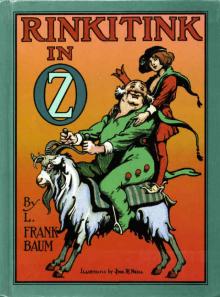 Rinkitink in Oz
Rinkitink in Oz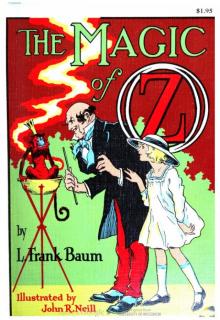 The Magic of Oz
The Magic of Oz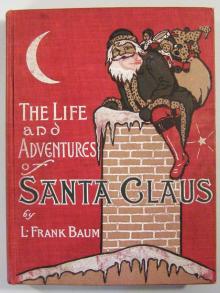 The Life and Adventures of Santa Claus
The Life and Adventures of Santa Claus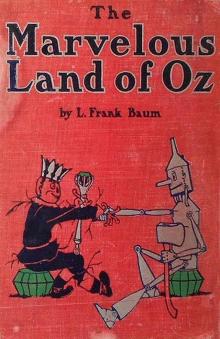 The Marvelous Land of Oz
The Marvelous Land of Oz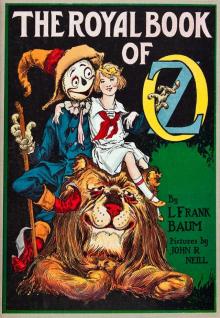 The Royal Book of Oz
The Royal Book of Oz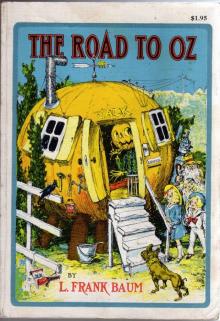 The Road to Oz
The Road to Oz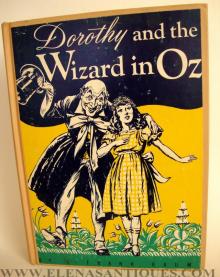 Dorothy and the Wizard in Oz
Dorothy and the Wizard in Oz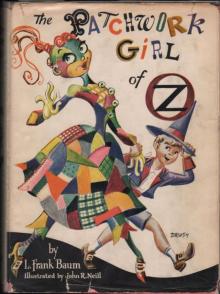 The Patchwork Girl of Oz
The Patchwork Girl of Oz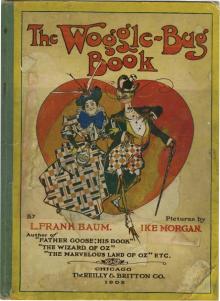 The Woggle-Bug Book
The Woggle-Bug Book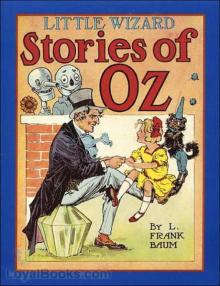 Little Wizard Stories of Oz
Little Wizard Stories of Oz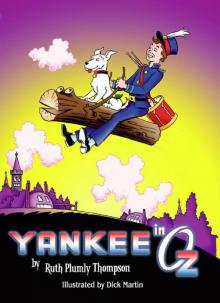 Yankee in Oz
Yankee in Oz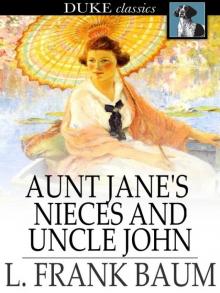 Aunt Jane's Nieces and Uncle John
Aunt Jane's Nieces and Uncle John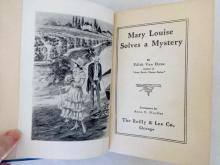 Mary Louise
Mary Louise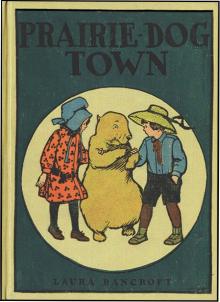 Prairie-Dog Town
Prairie-Dog Town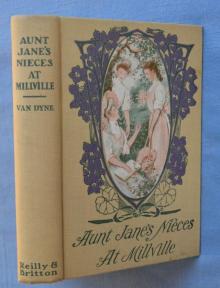 Aunt Jane's Nieces at Millville
Aunt Jane's Nieces at Millville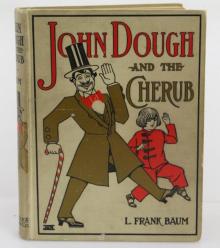 John Dough and the Cherub
John Dough and the Cherub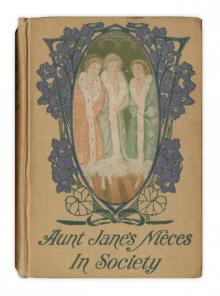 Aunt Jane's Nieces in Society
Aunt Jane's Nieces in Society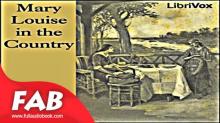 Mary Louise in the Country
Mary Louise in the Country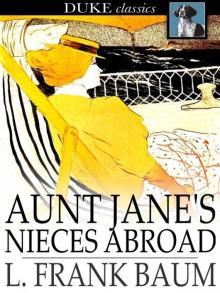 Aunt Jane's Nieces Abroad
Aunt Jane's Nieces Abroad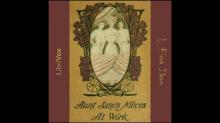 Aunt Jane's Nieces at Work
Aunt Jane's Nieces at Work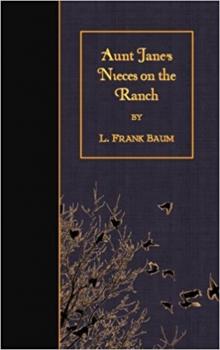 Aunt Jane's Nieces on the Ranch
Aunt Jane's Nieces on the Ranch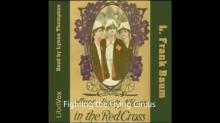 Aunt Jane's Nieces in the Red Cross
Aunt Jane's Nieces in the Red Cross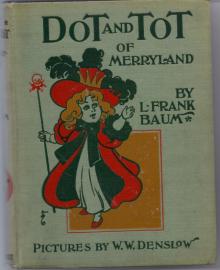 Dot and Tot of Merryland
Dot and Tot of Merryland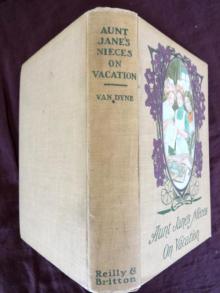 Aunt Jane's Nieces on Vacation
Aunt Jane's Nieces on Vacation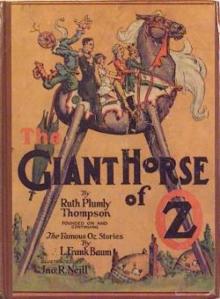 The Giant Horse Of Oz
The Giant Horse Of Oz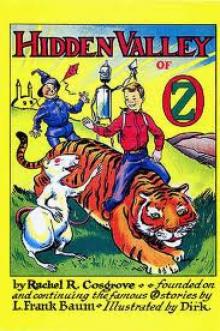 The Hidden Valley of Oz
The Hidden Valley of Oz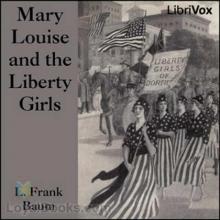 Mary Louise and the Liberty Girls
Mary Louise and the Liberty Girls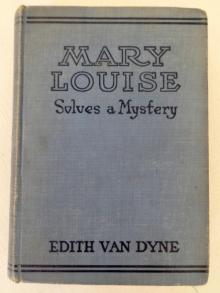 Mary Louise Solves a Mystery
Mary Louise Solves a Mystery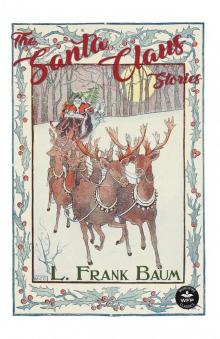 The Santa Claus Stories
The Santa Claus Stories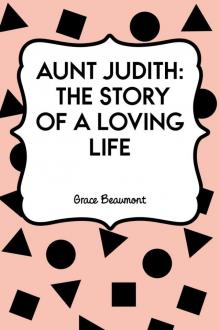 Aunt Judith: The Story of a Loving Life
Aunt Judith: The Story of a Loving Life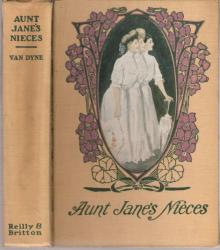 Aunt Jane's Nieces
Aunt Jane's Nieces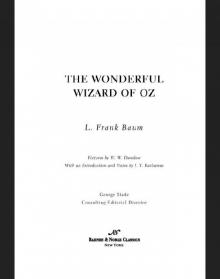 Wonderful Wizard of Oz (Barnes & Noble Classics Series)
Wonderful Wizard of Oz (Barnes & Noble Classics Series) Oz, The Complete Collection
Oz, The Complete Collection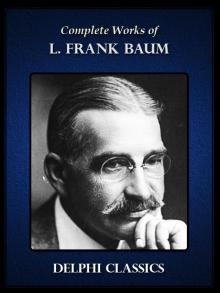 Complete Works of L. Frank Baum
Complete Works of L. Frank Baum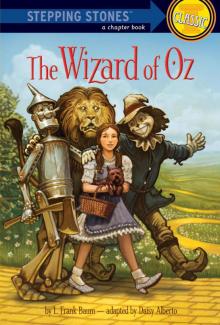 The Wizard of Oz
The Wizard of Oz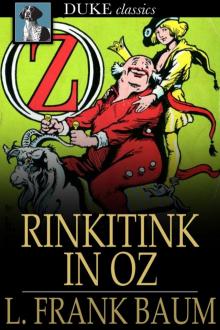 Oz 10 - Rinkitink in Oz
Oz 10 - Rinkitink in Oz